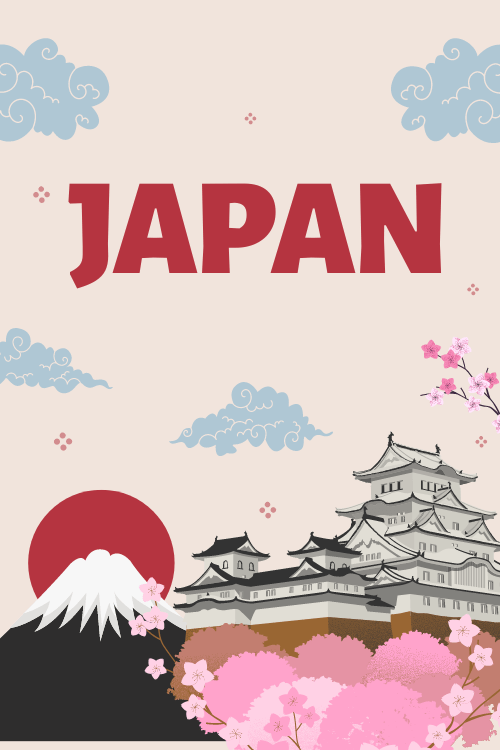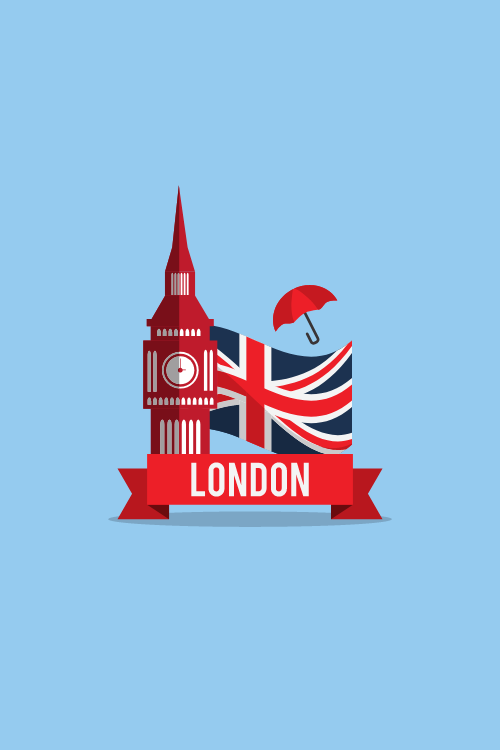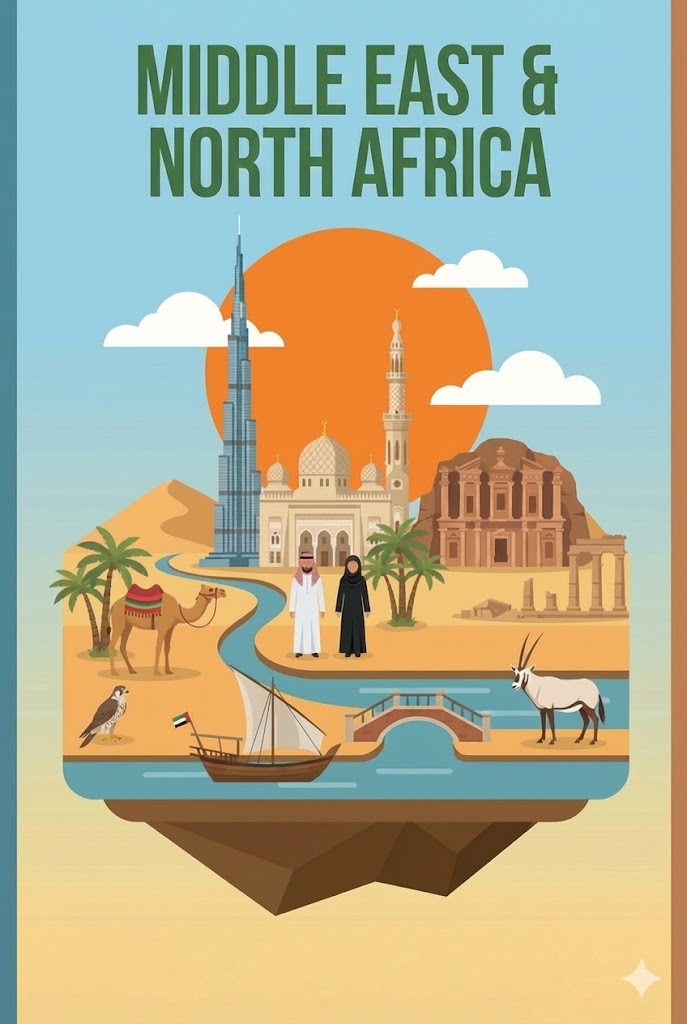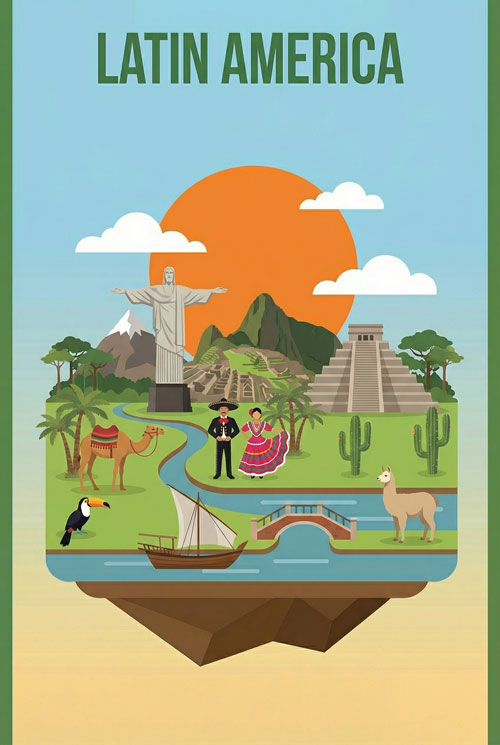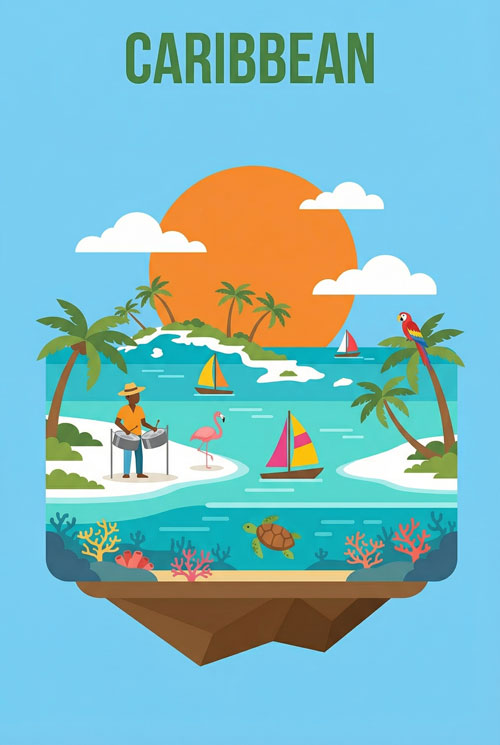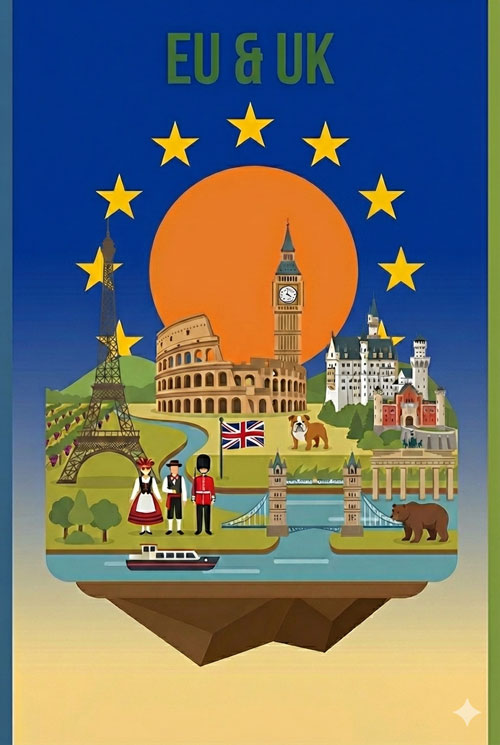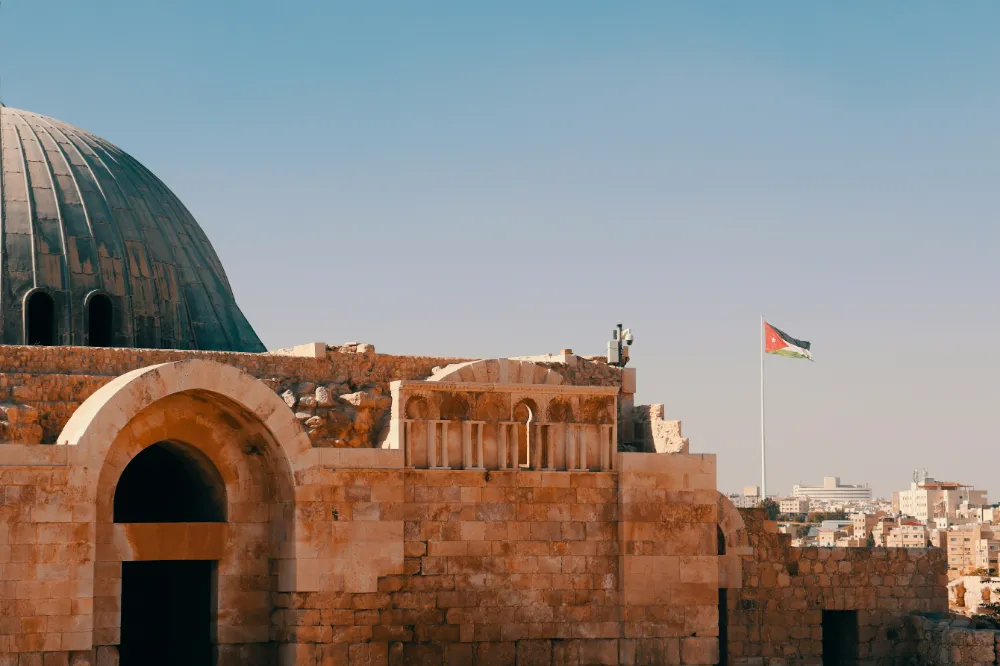Travel
The Best Time to Visit Egypt and Jordan: Travelers Guide
This guide is designed to be your definitive resource, demystifying the planning process by breaking down all the critical factors.
We’ll dive deep into the year-round weather patterns, explore the peak and off-peak tourist seasons, analyze how crowds and costs fluctuate, and highlight the major festivals and activities that can make your trip unforgettable.
By the end, you’ll be empowered to choose the travel window that perfectly aligns with your dream adventure, ensuring your journey through these lands of pharaohs and prophets is everything you’ve imagined and more.
2. The Short Answer: Egypt & Jordan At-a-Glance
For those who want the key information right away, here’s a quick guide to help you pinpoint your perfect travel window.
The most crucial factor to understand is the fundamental trade-off in this region: the most comfortable and pleasant weather almost always coincides with the highest prices and the largest crowds.
Understanding this will help you manage your expectations and choose the compromise that works best for you.
The Best Time to Visit Egypt & Jordan
Your Complete Visual Guide for 2025/2026
Egypt & Jordan At-a-Glance
Best Weather
Mar–Apr & Oct–Nov
For comfortable, sunny days perfect for sightseeing.
Best for Budget
May–August
Lowest prices if you can handle the heat.
Fewest Crowds
May & September
Enjoy major sites with more breathing room.
Best for Nile Cruise
October–April
Pleasant weather for daily shore excursions.
Decoding the Desert Climate
The region is defined by its hot, dry climate. This chart shows monthly averages for Cairo, a good baseline for Egypt. Jordan’s highlands will be cooler, especially in winter.
A Tale of Four Seasons
Spring (Mar – May)
A beautiful season with mild weather and blooming wildflowers in Jordan. It’s a popular time, so expect rising crowds, especially in Jordan. Watch for the Khamsin wind in Egypt.
Summer (Jun – Aug)
The season of extremes. The heat is intense, but you’re rewarded with the absolute lowest prices and fewest tourists. Early morning sightseeing is a must!
Autumn (Sep – Nov)
Widely considered the best time to visit. The weather is perfect for exploring, and the Red Sea is wonderfully warm. This is a peak season, so book well in advance.
Winter (Dec – Feb)
Peak season for a reason: the weather in Egypt is ideal for sightseeing. Jordan can be quite cold. Expect the biggest crowds and highest prices, especially over the holidays.
What’s Your Travel Style?
The “best” time depends on what you value most. Follow this guide to find your perfect travel window.
START HERE
What is your main priority?
Perfect Weather
SPRING / AUTUMN
(Mar-Apr, Oct-Nov)
Lowest Prices
SUMMER
(Jun – Aug)
Fewer Crowds
SHOULDER
(May & Sep)
Your Perfect Trip to Egypt & Jordan – The Quick Guide
| Travel Goal | Best Time to Go | Why It’s the Best Time |
| Perfect Weather for Sightseeing | March–April & October–November | These months offer a glorious sweet spot of mild, sunny days and comfortable temperatures, perfect for spending long hours exploring vast outdoor sites like the Valley of the Kings and Petra without battling extreme heat or winter chill. |
| Lowest Prices & Budget Travel | May–August | This is the official off-season due to scorching summer heat. Travelers willing to brave the high temperatures will be rewarded with the lowest prices on flights and hotels, which can be 30-40% cheaper than in peak season. |
| Avoiding the Crowds | May, September, & early March | These shoulder months provide a great balance. You’ll find manageable weather and significantly fewer people than in the peak seasons. The deep off-season (June-August) has the absolute fewest tourists but comes with the most challenging heat. |
| A Classic Nile Cruise | October–April | The weather during this period is cool and pleasant, which is essential for the daily shore excursions to temples and tombs. These tours involve a lot of walking in direct sunlight, making the cooler months far more enjoyable. |
| Red Sea Diving & Beaches | Year-round, but Autumn (September-November) is peak | The Red Sea offers fantastic diving all year. However, autumn provides the ultimate combination of beautifully warm water, pleasant air temperatures, and excellent marine life sightings. |
3. Egypt & Jordan: A Detailed Season-by-Season Breakdown
To truly understand the nuances of planning your trip, it’s essential to look at how the experience changes with each season. Here’s a comprehensive breakdown of what to expect throughout the year in both Egypt and Jordan.
A. Spring (March – May): The Sweet Spot of Wildflowers and Mild Weather
Spring is a magical time in the region, often considered one of the best windows to visit before the intense heat of summer arrives.
Egypt in Spring
- Weather: The climate is delightful as temperatures warm up from mild to hot. Average maximums climb from a pleasant 24∘C (76∘F) in March to a hotter 32∘C (90∘F) by May, with abundant sunshine averaging 10.5 to 12 hours per day. This makes it an ideal time for sightseeing.
- The Khamsin Wind: A critical weather phenomenon to be aware of is the Khamsin, a hot, dry desert wind that can blow from mid-March through April. This wind can stir up sandstorms that reduce visibility and can occasionally disrupt travel plans for a day or two. It’s wise to pack a scarf or face covering just in case.
- Pros: The weather is beautiful for exploring ancient sites and is particularly well-suited for a Nile cruise, as the daytime temperatures for shore excursions are not yet scorching.
- Cons: As a popular shoulder season, crowds and prices are on the rise. The unpredictable Khamsin wind is a potential, albeit usually minor, inconvenience.
Jordan in Spring
- Weather: Spring is widely regarded as the absolute best time to visit Jordan. The country is at its most beautiful, with winter rains transforming the landscape. Valleys and even parts of the desert are carpeted in a surprising kaleidoscope of wildflowers. Temperatures are perfect for outdoor adventures, with Amman’s average temperatures ranging from a mild 16∘C (61∘F) to a warm 27∘C (81∘F).
- Pros: The weather is tailor-made for active pursuits. It’s the perfect season for hiking in the Dana Biosphere Reserve or spending a full day exploring the sprawling ancient city of Petra on foot. The lush, green scenery is a unique sight.
- Cons: This is Jordan’s peak tourist season. Consequently, you should expect the largest crowds of the year at iconic sites like Petra and Wadi Rum, along with the highest prices for flights and accommodations.
Holiday Spotlight: Ramadan and Easter
It’s important to note that the holy month of Ramadan often falls during the spring (the exact dates change each year according to the lunar calendar). Traveling during Ramadan offers a unique cultural experience. While you’ll find shorter opening hours at attractions and will need to refrain from eating or drinking in public during daylight hours out of respect, the evenings come alive with a wonderfully festive atmosphere as families and friends gather for the iftar meal to break their fast. For cultural travelers, this is a major pro, but for those prioritizing convenience, it may be a con.
In Egypt, this season also includes Coptic Easter and the ancient national spring festival of Sham El-Nessim, which is celebrated on the Monday following Coptic Easter. On this day, parks and public spaces are filled with Egyptian families enjoying picnics.
B. Summer (June – August): The Season of Sun, Solitude, and Savings
Summer is the season of extremes: the most intense heat, but also the lowest prices and fewest fellow travelers.
Egypt in Summer
- Weather: The heat is a defining factor. In Upper Egypt, home to Luxor and Aswan, temperatures regularly soar above 40∘C (104∘F) and have been recorded as high as 51∘C (124∘F). Cairo is slightly less extreme but still very hot, with average highs of 34−35∘C (93−95∘F). There is virtually no rainfall and a staggering 13 to 14 hours of daily sunshine. The one respite is the Red Sea coast, where constant sea breezes make the high temperatures feel more manageable.
- Pros: This is, without a doubt, the cheapest time to visit Egypt, with the fewest international tourists. It presents a fantastic opportunity to experience luxury hotels and tours for a fraction of the peak season price. For divers, the Red Sea is at its best, with the warmest water temperatures of the year.
- Cons: The oppressive heat is a serious consideration for both comfort and health. Sightseeing in the middle of the day is often ill-advised, and the enclosed, unventilated tombs in the Valley of the Kings can become intensely stuffy and uncomfortable.
Jordan in Summer
- Weather: The climate is intensely hot and dry. Desert destinations like Wadi Rum and Petra can easily reach temperatures of 38∘C (100∘F) and higher. The capital, Amman, is also very hot, with average highs around 32∘C (90∘F).
- Pros: Just like in Egypt, summer is the low season in Jordan. This translates to significant savings on travel and accommodation, and you’ll encounter far fewer crowds at major sites. It’s a viable option for travelers who can tolerate dry heat.
- Cons: The extreme temperatures make extensive physical activity, such as walking the trails of Petra or trekking in the Wadi Rum desert, exceptionally challenging and potentially unsafe during midday.
Festival Spotlight: Jerash Festival
Despite the heat, Jordan hosts one of its premier cultural events in the summer: the Jerash Festival of Culture and Arts. Typically held in July or August, this major festival transforms the ancient Roman city of Jerash with vibrant performances of music, dance, poetry, and theatre from across the Arab world and beyond. This is a significant cultural draw that makes Jerash and nearby Amman bustling hubs of activity, attracting large crowds even in the off-season.
C. Autumn (September – November): The Second Spring
As the intense heat of summer subsides, autumn ushers in another prime season for travel, often described as a “second spring.”
Egypt in Autumn
- Weather: Temperatures begin to cool down in September, becoming exceptionally pleasant by October and November. Average highs drop from around 33∘C (91∘F) in September to a perfect 25∘C (78∘F) in November. This is widely considered ideal travel weather.
- Pros: Many travelers and experts agree that this is the absolute best time to visit Egypt. The climate is perfect for comfortably exploring the Pharaonic sites of the Nile Valley and for enjoying a Nile cruise. The Red Sea water remains wonderfully warm from the summer, making it a great time for a beach or diving holiday.
- Cons: The secret is out. This is a very popular season, so expect crowds and prices to ramp up significantly, approaching peak levels by the end of November.
Jordan in Autumn
- Weather: The oppressive summer heat finally breaks, creating another ideal window for visiting Jordan. The weather is mild and dry, perfect for all kinds of outdoor exploration.
- Pros: This season offers excellent conditions for hiking and exploration. It’s a fantastic time to tackle the trails of Petra, take a jeep tour through Wadi Rum, or float in the buoyant waters of the Dead Sea. For divers, Aqaba is at its absolute peak, with crystal-clear visibility and warm water temperatures.
- Cons: This is Jordan’s second peak season. As a result, there is high demand for hotels and tours, leading to higher prices and more crowded sites.
Festival Spotlight: Abu Simbel Sun Festival
A truly spectacular event takes place in Egypt on October 22nd: the Abu Simbel Sun Festival. On this date (and again on February 22nd), the architectural genius of the ancient Egyptians is on full display as the rising sun penetrates the main temple, illuminating the statues of the gods in the inner sanctum. This is a major tourist attraction that draws huge crowds, so if you wish to witness it, you must book your travel and accommodation in the Aswan/Abu Simbel area many months in advance.
D. Winter (December – February): The Peak Season of Cool Days and Big Crowds
Winter brings the most pleasant weather for sightseeing but also the largest crowds and highest prices of the year, especially around the holidays.
Egypt in Winter
- Weather: For most tourists, the weather is perfect. Days are mild and sunny, while evenings are cool enough to require a jacket or sweater. In Cairo and Luxor, daytime highs hover at a very comfortable 19−22∘C (66−72∘F). The Mediterranean city of Alexandria is the exception, where you might experience some rainy days.
- Pros: This is unequivocally the most comfortable time of year for sightseeing. You can explore temples and tombs for hours without the burden of heat.
- Cons: This is the absolute peak of the tourist season. Crowds at all major sites are at their largest, and prices for flights and hotels reach their annual zenith. Over the Christmas and New Year’s period, costs can easily double. Booking everything several months in advance is not just recommended; it’s essential.
Jordan in Winter
- Weather: A trip to Jordan in winter reveals a different climate profile than Egypt’s. It can be surprisingly cold, particularly in the highlands. Amman and Petra often experience biting winds, and nighttime temperatures can plummet below freezing, with snow being a real possibility. This is also the rainiest time of year for the country. In stark contrast, the Jordan Valley (home to the Dead Sea) and the southern coastal city of Aqaba remain much milder and more pleasant.
- Pros: Because of the colder weather, you’ll encounter significantly fewer crowds than in the popular spring and autumn seasons. The warmer climates of the Dead Sea and Aqaba make them excellent destinations for a winter sun escape.
- Cons: The cold, wind, and potential for rain or snow can make visiting the northern and central highlights like Amman, Jerash, and even Petra less appealing for some. Desert nights in Wadi Rum are frigid. Furthermore, many popular hiking trails, especially those in canyons, may be closed due to the risk of flash floods.
Holiday Spotlight: Christmas and Local Festivals
The Christmas and New Year’s holidays are the primary drivers of the winter peak season in both countries. In Egypt, it’s worth noting that Coptic Christmas is celebrated on January 7th, which extends the holiday rush. In Jordan, a lovely local event to experience is the Aqaba Traditional Arts Festival in February, which celebrates the culture of the Bedouin people.
4. Finding Your Perfect Time: A Guide by Travel Style
Now that we’ve explored the seasons, let’s synthesize that information into direct, actionable advice tailored to your specific travel style and priorities.
A. The Best Time for Budget Travelers & Avoiding Crowds
For those whose primary goals are to find the best deals and see the sights without the masses, the choice is clear but comes with a significant caveat.
- Primary Recommendation: The summer months of June, July, and August are unequivocally the cheapest time to visit both Egypt and Jordan. During this off-season, prices for flights and accommodations can be dramatically lower than during the peak winter months.
- The Trade-Off: This affordability comes at the price of enduring extreme heat. Temperatures in inland Egypt and Jordan can be brutally hot, making daytime exploration a serious challenge.
- The “Smart Summer” Strategy: Traveling in summer is entirely possible with the right approach.
- Focus on the Coasts: Base your trip in the Red Sea resort towns of Hurghada or Sharm El Sheikh in Egypt, or Aqaba in Jordan. The constant sea breezes provide significant relief from the inland heat.
- Become an Early Bird: This is non-negotiable. All sightseeing at hot, exposed sites like Luxor, Aswan, or Petra must be done at sunrise. Plan to be back at your air-conditioned hotel or by the pool by late morning to escape the punishing midday sun.
- Hydrate and Dress Smart: Emphasize the critical importance of drinking plenty of water, using high-SPF sunscreen, wearing a wide-brimmed hat, and dressing in light, loose-fitting, natural-fiber clothing.
- Consider a “Surgical Strike” Approach: Instead of a long overland tour, you might fly from a coastal base to Luxor for a very short, targeted 1-2 day visit to see the main sites, minimizing your time in the most intense heat.
B. The Best Time for Sightseeing & Perfect Weather
If your dream trip involves long, comfortable days spent marveling at ancient wonders without shivering or sweltering, the shoulder seasons are your answer.
- Primary Recommendation: The months of March, April, October, and November offer the best of both worlds.
- The Experience: This is the time to truly savor the destinations. Imagine walking through the cool, narrow Siq to the Treasury in Petra in pleasant warmth, exploring the vast temple complexes of Karnak and Luxor without the oppressive heat, and cruising the Nile with the sun on your face and a refreshing breeze in the air.
- The Catch: You won’t be the only one with this idea. These months are very popular, so while the weather is perfect, the crowds will be significant and prices will be high—though typically not as inflated as during the Christmas and New Year’s peak. The most important piece of advice is to book your flights, accommodations, and key tours well in advance to secure availability and better rates.
C. The Best Time for Families
Family travel often comes with the constraint of being tied to school holiday schedules. This means navigating the two most extreme periods: the peak-priced winter and the peak-heat summer.
- Winter Holidays (December – February): This is an extremely popular time for families to visit, especially Egypt, due to the fantastic weather coinciding with the Christmas break. The experience will be wonderful, but it will also be crowded and expensive. For travel during this period, booking at least six months in advance is not a suggestion—it’s a necessity to avoid sold-out tours and sky-high prices.
- Summer Holidays (June – August): For many families, summer is the only viable time for a long trip. It is absolutely manageable, but it requires careful and responsible planning to ensure the comfort and safety of children in the heat. The “Smart Summer” strategy outlined for budget travelers is even more critical for families. A key tip is to choose June over July or August if possible, as it tends to be slightly cooler and less crowded with local holidaymakers.
- Spring Break (March/April): This period represents the ideal compromise for families who have this travel window. The weather is fantastic in both countries, and while it’s a busy time, it’s generally less frantic and expensive than the Christmas peak. If you can make it work, Spring Break offers the best possible balance of great weather, manageable crowds, and reasonable costs for a family adventure.
5. A Deep Dive into Key Activities
If your trip is built around a specific passion, this section provides the specialized advice you need to plan the perfect experience.
A. Cruising the Nile (Egypt)
A cruise along the Nile is the quintessential Egyptian experience, but timing is everything.
- The Verdict: For the vast majority of travelers, the period from October to April is the only truly comfortable time to take a Nile cruise.
- The ‘Why’ Explained: The core of the Nile cruise experience is not just relaxing on the sundeck; it’s the daily land excursions to magnificent sites like the Valley of the Kings, Karnak Temple, Edfu, and Philae Temple. These tours involve several hours of walking, often in exposed, sun-baked archaeological sites. Attempting this in the summer, when temperatures regularly exceed 40∘C (104∘F), can be physically draining and even hazardous for some.
- Summer Cruising: It’s important to know that cruises do operate in the summer, often at a significant discount. This can be an option for the extremely heat-tolerant and budget-conscious traveler. However, one must be fully prepared for the intensity of the daytime excursions and prioritize hydration and sun protection above all else. Many tours will adapt by starting extremely early in the morning to avoid the worst of the heat.
B. Exploring Petra & Wadi Rum (Jordan)
These iconic Jordanian landscapes demand a lot of time on your feet, making weather a critical factor.
- The Verdict: The spring months of March to May and the autumn months of September to November are paramount for a comfortable and enjoyable visit.
- The ‘Why’ Explained: Petra is not a single monument but a vast archaeological park that requires extensive walking. The journey through the Siq, the main trail to the Treasury and theatre, and especially the strenuous but rewarding climb to the Monastery all add up to many kilometers on foot. Similarly, exploring Wadi Rum involves desert treks and open-air jeep tours. Pleasant weather isn’t just a luxury here; it’s essential for being able to fully appreciate these incredible places safely and comfortably.
- Day-Timing at Petra: A pro tip for any season is to manage your time of day. Arrive at the site when it opens at 6 am to experience the magical morning light and beat the tour bus crowds. Alternatively, plan your visit for the late afternoon to see the rock faces glow in the setting sun. And for a truly unforgettable experience, consider the “Petra by Night” tour, where the path to the Treasury is lit by thousands of candles.
C. Diving the Red Sea (Egypt & Jordan)
The Red Sea is a world-class diving destination, offering incredible underwater experiences year-round. The best time for you depends on what you want to see and your tolerance for water temperature.
- The Overall Picture: Diving is fantastic all year in both countries. The primary differences between seasons are the water temperature (which dictates the thickness of your wetsuit) and the migratory patterns of large marine species.
Red Sea Diving Calendar
| Season | Egypt (Sharm, Hurghada, Marsa Alam) | Jordan (Aqaba) | Key Considerations |
| Spring (Mar-May) | Water is warming up nicely (23−26∘C). This is the start of the season for spotting whale sharks (May-Aug). | Comfortable water temps (20−23∘C). A spring plankton bloom can slightly reduce visibility but attracts abundant marine life. | A great all-around season. Egypt’s water is becoming very pleasant. |
| Summer (Jun-Aug) | Warmest water of the year (27−30∘C). This is the prime time to see hammerhead sharks at famous offshore sites like the Brothers Islands and Daedalus Reef. | Hottest air temperatures, but the water is a delightful 26∘C. Seas are often very calm with excellent visibility. | The top choice for shark enthusiasts in Egypt. A perfect way to escape the intense inland heat in both countries. |
| Autumn (Sep-Nov) | PEAK DIVING SEASON. The perfect balance of very warm water (25−28∘C) and pleasant air temperatures. Good chances to see elusive thresher sharks. | PEAK DIVING SEASON. Many consider this the absolute best time. Visibility is often crystal-clear (up to 30 meters), and there are fewer crowds than in summer. | This is the “golden season” for diving in both Egypt and Jordan, offering the best combination of conditions. |
| Winter (Dec-Feb) | Coolest water (22−25∘C). A 5mm or 7mm wetsuit is recommended. A good time to spot oceanic whitetip sharks. | Coolest water (20−23∘C). Dive sites are very quiet and uncrowded. A great time for a peaceful dive experience. | Ideal for divers who want to avoid crowds, but be prepared for chillier water and air temperatures, especially on the boat. |
6. Traveler’s Calendar: Major Holidays & Festivals
Timing your trip around local holidays and festivals can offer a unique cultural immersion, but it’s essential to understand how they might impact your plans.
A. Understanding Key Religious Holidays
These holidays are based on the Islamic lunar calendar, so their dates on the Gregorian calendar shift each year. Always check the dates for your specific year of travel.
- Ramadan: This is the ninth month of the Islamic calendar, observed by Muslims worldwide as a month of fasting, prayer, reflection, and community. For travelers, it has a dual impact. During the day, life slows down. Many restaurants and cafes are closed, business hours are reduced, and it’s important to be respectful by not eating, drinking, or smoking in public. However, after sunset, the atmosphere transforms into one of joyous celebration. Streets and restaurants buzz with energy as people gather for iftar, the evening meal. Experiencing this festive, communal spirit is a unique cultural opportunity.
- Eid al-Fitr & Eid al-Adha: These are the two most important Islamic holidays. Eid al-Fitr (“Festival of Breaking the Fast”) is a multi-day celebration marking the end of Ramadan. Eid al-Adha (“Festival of Sacrifice”) occurs later in the year and commemorates the willingness of the Prophet Ibrahim to sacrifice his son. Both are major public holidays, similar in scale to Christmas in the West. Expect widespread closures of banks, government offices, and some shops. It is a time for family, feasting, and prayer. Travel during these periods can be challenging due to heavy local travel, but it also offers a chance to witness deep-rooted cultural traditions.
- Coptic Christian Holidays: Egypt has a large Coptic Christian population. Coptic Christmas on January 7th and Coptic Easter (the date varies) are important celebrations and contribute to the high tourist numbers during the winter and spring seasons.
B. Key Annual Events & Their Impact on Your Trip
| Event | Country | Typical Timing | Impact on Travel |
| Abu Simbel Sun Festival | Egypt | Feb 22 & Oct 22 | High Impact. A spectacular bi-annual event where the sun illuminates the temple’s inner sanctum. It draws massive crowds. Book all travel and accommodation for Abu Simbel and Aswan many months in advance. |
| Jerash Festival of Culture & Arts | Jordan | July / August | High Impact. A major international arts festival held in the ancient Roman city. Expect Jerash and Amman to be very busy with high demand for hotels, despite the summer heat. |
| Independence Day | Jordan | May 25 | Medium Impact. A national holiday with patriotic parades and celebrations. Some businesses may be closed, and there may be increased local travel. |
| Revolution Days | Egypt | Jan 25 & July 23 | Medium Impact. National holidays commemorating key moments in modern Egyptian history. Expect patriotic displays, military parades, and some business closures. |
| Sham El-Nessim | Egypt | Monday after Coptic Easter | Medium Impact. An ancient spring festival celebrated nationwide. Parks, gardens, and public spaces by the Nile will be very busy with Egyptian families enjoying picnics and outings. |
| Aqaba Traditional Arts Festival | Jordan | February | Low Impact. A wonderful local festival celebrating Bedouin culture. A great bonus if you’re in Aqaba, but it doesn’t typically cause major travel disruptions or price hikes. |
7. Stay Connected in Egypt and Jordan with an eSIM
After all the planning, imagine this: you’ve just landed in Cairo or Amman. You’re excited, a little tired from the flight, and the first thing you need is data. You want to order a ride-share to your hotel, pull up the address on a map, or just send a quick message to family letting them know you’ve arrived safely. But you’re immediately faced with a choice: risk exorbitant roaming charges from your home provider, or begin the often-frustrating hunt for a local SIM card kiosk, navigating currency, language barriers, and registration processes.
This is the old way of staying connected. The modern, savvy traveler has a much better option.
An eSIM is a digital SIM card that you can download directly to your phone. It’s the ultimate travel hack for convenience, affordability, and peace of mind.
With an eSIM from eSIM4.com, you can solve this problem before you even leave home. Simply purchase and download a data plan for Egypt, Jordan, or even a regional plan that covers both countries. The moment your plane touches down, you can activate your plan and be online instantly. No more airport SIM queues, no more fumbling for passports at a kiosk, and absolutely no surprise roaming fees when you get home. It’s seamless, digital, and ready when you are.
Ready to travel smarter?
Check out eSIM4.com for affordable, reliable data plans for your trip to Egypt and Jordan.
Click here to see our eSIM plans for Egypt
Click here for our eSIM plans for Jordan

